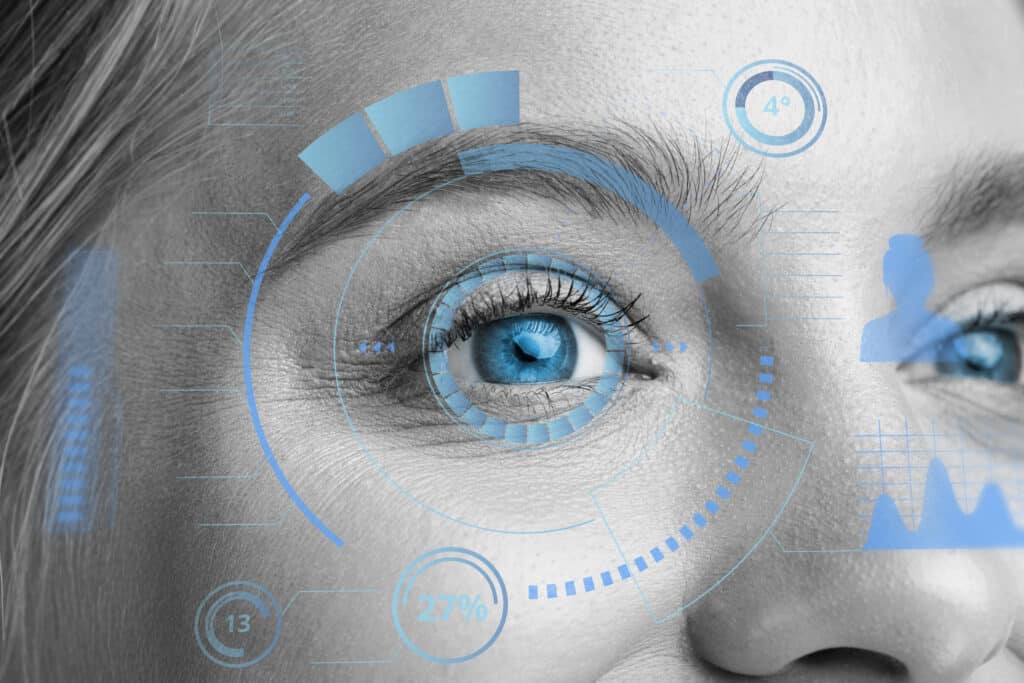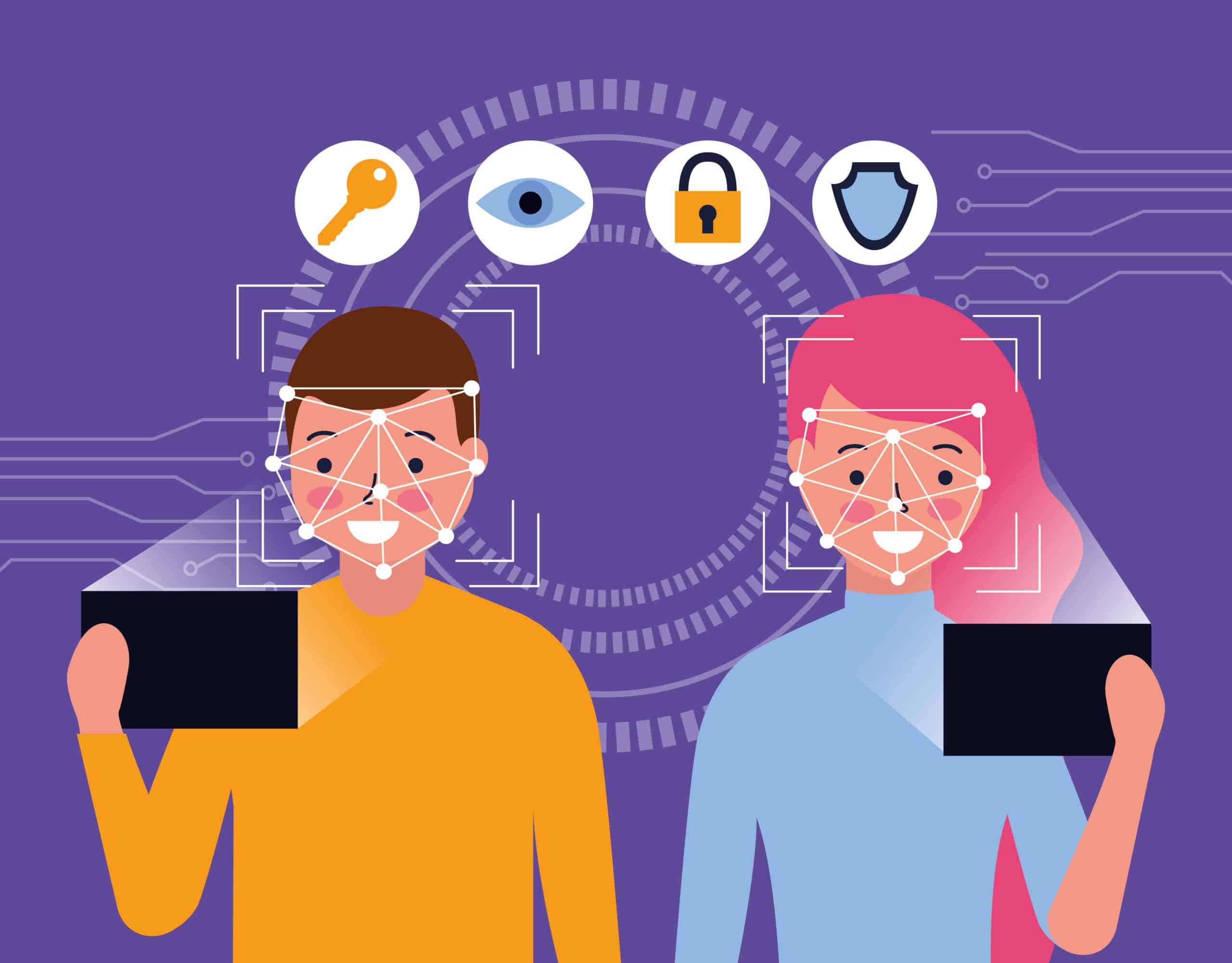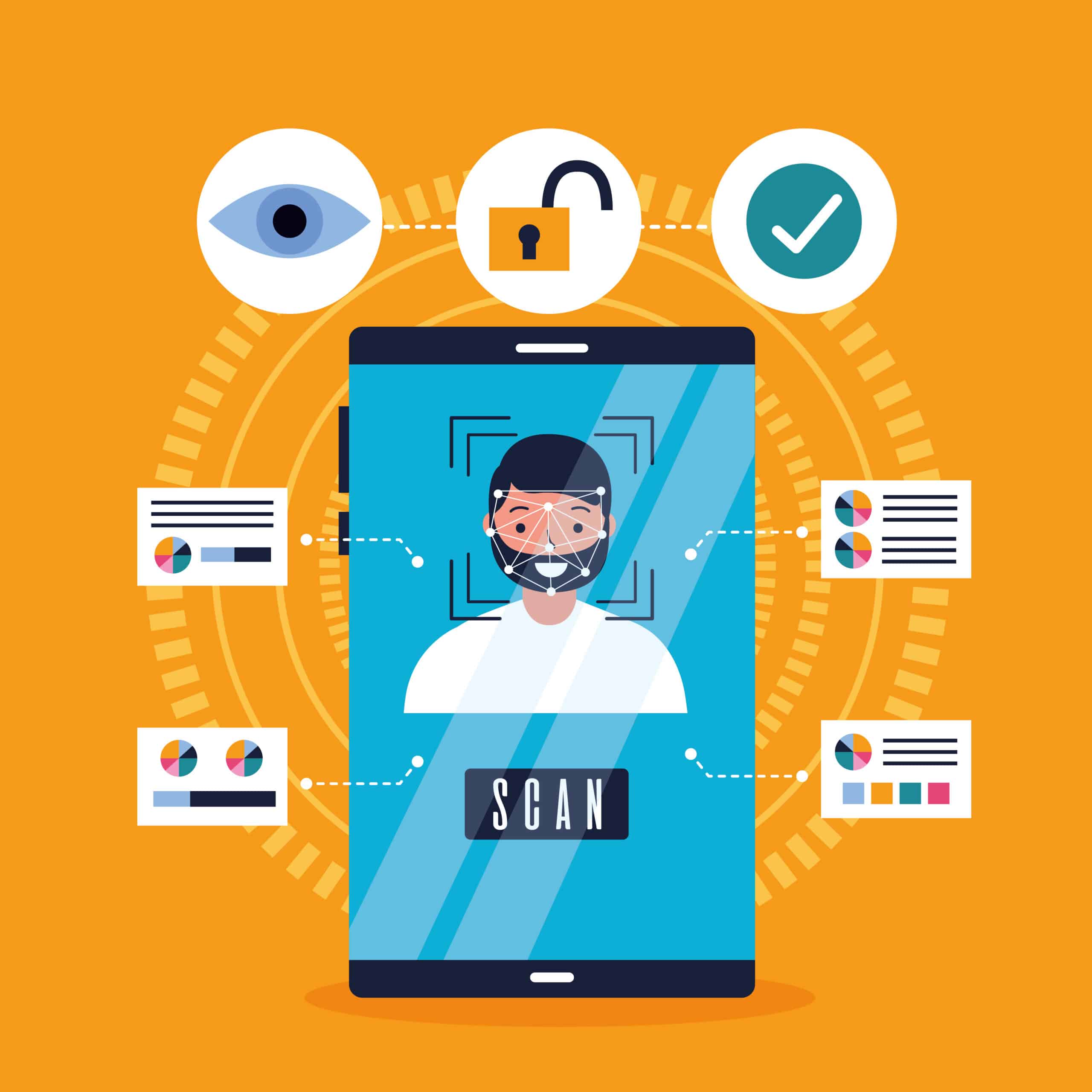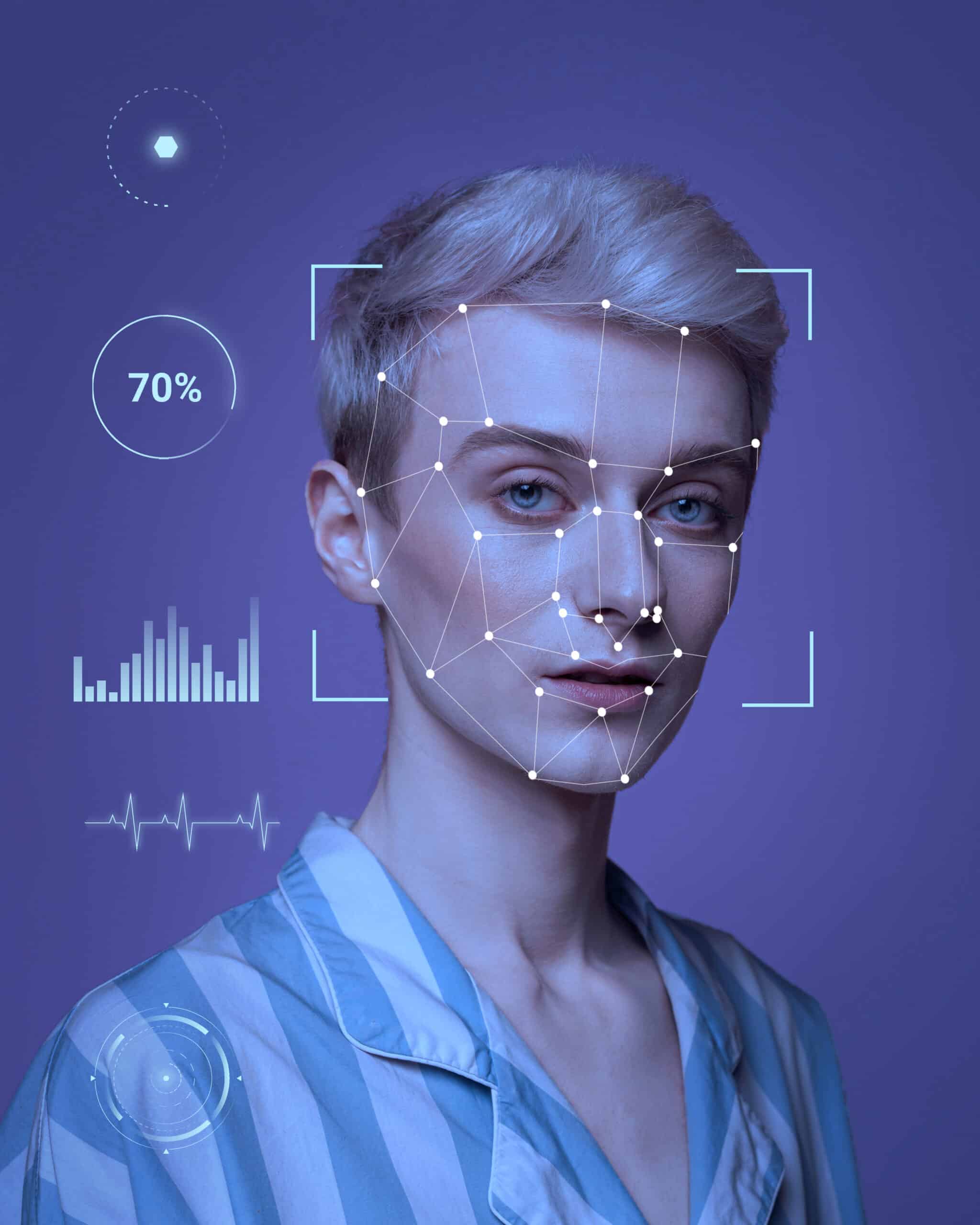Advanced Facial Recognition for Secure Identity Verification Solutions


In a world where digital security is paramount, facial recognition identity verification has emerged as a pioneering solution for secure access. This cutting-edge technology utilizes unique facial features to authenticate individuals, offering enhanced security, convenience, and efficiency across various industries.
Like any innovation, it comes with potential risks such as privacy concerns and biased algorithms. As advancements continue to improve this technology, it is important to explore the alternatives and understand how facial recognition is evolving to meet the demands of the digital age.
What Is Facial Recognition Identity Verification?
Facial Recognition Identity Verification is a cutting-edge technology that utilizes biometric analysis to confirm an individual’s identity by assessing unique facial features and patterns.
This innovative technology plays a crucial role in verifying digital identities with a high level of accuracy and security. By capturing facial characteristics such as the distance between eyes, nose shape, and jawline structure, facial recognition systems create a unique biometric template for each individual. This biometric data serves as a reliable method for authentication, ensuring that only authorized users can access sensitive information or secure locations. Secure identity verification is essential in various industries, from banking and healthcare to law enforcement and border control, to protect against identity theft and fraud.
How Does Facial Recognition Identity Verification Work?
Facial Recognition Identity Verification operates by capturing facial scans or images, processing them through advanced algorithms for facial analysis, and conducting real-time verification to authenticate the user’s identity.
This technical process relies on the precise identification of unique facial features such as the distance between eyes, nose shape, and jawline contours. Algorithms play a crucial role in decoding and interpreting these features to generate a facial template for comparison.
Real-time verification is essential for swift and accurate authentication, ensuring that access is granted promptly while maintaining security standards. Facial detection and analysis not only enhance security measures but also streamline identity management processes, offering a seamless and efficient user experience.
What Are the Benefits of Facial Recognition Identity Verification?
Facial Recognition Identity Verification offers a myriad of benefits, including enhanced security measures, convenient and efficient authentication processes, accurate user verification, secure transactions, and fraud prevention capabilities.
It is widely recognized for its ability to provide an extra layer of security by verifying users’ identities through sophisticated facial recognition technology. This ensures that only authorized individuals can access sensitive information or make transactions, reducing the risk of unauthorized access or identity theft.
The convenience of facial recognition in authentication processes eliminates the need for complex passwords or PINs, streamlining the user experience. The efficiency of this technology in verifying identities quickly and accurately enhances user trust and satisfaction, contributing to smoother and more secure transactions.
The high accuracy of facial recognition authentication reduces the margin for error in identifying users, minimizing the likelihood of fraudulent activities and ensuring the integrity of transactions.
Enhanced Security
Enhanced Security is a prime advantage of Facial Recognition Identity Verification, providing advanced security measures in various environments to safeguard against identity theft and offer secure authentication solutions.
Facial recognition technology plays a crucial role in enhancing security across a wide range of sectors, from government institutions to commercial enterprises. By accurately identifying individuals through unique facial features, this technology significantly reduces the risk of unauthorized access and fraudulent activities.
Industries such as finance, healthcare, and transportation benefit greatly from the implementation of facial recognition systems, ensuring that sensitive information remains protected and secure. The use of facial recognition for secure authentication methods adds an extra layer of security, enhancing overall protection against cyber threats and unauthorized access.
Convenience
Convenience is a significant benefit of Facial Recognition Identity Verification, offering streamlined and user-friendly access control for secure transactions while prioritizing user privacy and safeguarding biometric data.
Facial recognition technology not only enhances convenience in authentication processes but also plays a crucial role in securing transactions by providing a seamless and efficient way for users to verify their identity. By ensuring that only authorized individuals can access sensitive information or perform transactions, facial recognition adds an extra layer of security to safeguard user data.
The user-friendly aspects of facial recognition make it a preferred choice for many, as it eliminates the need to remember complex passwords or carry physical tokens for access. This ease of use contributes to a more seamless and efficient authentication process, enhancing overall user experience.
Efficiency
Efficiency is a key advantage of Facial Recognition Identity Verification, optimizing the verification process through machine learning algorithms that utilize facial databases to enhance facial recognition technology.
By leveraging facial recognition technology for identity verification, businesses and organizations can streamline their authentication processes, providing a more secure and efficient method for verifying individuals. Through the use of advanced algorithms, facial recognition systems can quickly compare facial features against stored data, enabling swift and accurate identification. The machine learning aspect continuously improves the accuracy of these systems over time by learning from each verification instance, ensuring a high level of precision in identifying individuals. This technological advancement not only increases security measures but also enhances user experiences by eliminating the need for cumbersome and time-consuming manual verification methods.
What Are the Potential Risks of Facial Recognition Identity Verification?
While Facial Recognition Identity Verification offers significant advantages, it also presents potential risks such as privacy concerns, biases in algorithms, and the occurrence of false positives and negatives, raising issues of data protection.
Privacy concerns arise as facial recognition technology may compromise individuals’ personal information and be susceptible to data breaches. Biases in algorithms used for facial recognition systems can lead to discrimination against certain demographics, impacting their access to services or opportunities. False positives and negatives in verification processes can result in mistaken identity or denial of access, highlighting the need for continuous improvement and monitoring of these systems.
Privacy Concerns
Privacy Concerns pose a significant risk in Facial Recognition Identity Verification, raising issues related to user privacy, protection of facial images, and the necessity for robust digital security measures to safeguard customer data.
In today’s digital age, where facial recognition technology is becoming increasingly prevalent, ensuring that sensitive facial data is securely stored and protected is more important than ever.
The blurred lines between convenience and privacy in the world of biometric identification call for a delicate balance to be struck. The key lies in not only embracing the benefits of facial recognition systems but also in understanding the critical role that digital security plays in safeguarding user identities and privacy.
Challenges persist in maintaining airtight security measures amidst the rapidly evolving landscape of identity verification systems.
Biased Algorithms
Biased Algorithms present a risk in Facial Recognition Identity Verification, as they may lead to inaccuracies in identifying facial features, unique identifiers, and matching profiles, impacting the effectiveness of the verification process.
This issue arises due to the algorithms being trained on datasets that may contain inherent biases towards certain demographics, leading to errors in accurately detecting facial features and unique identifiers. These biases can result in disparities in facial matching accuracy, where individuals from underrepresented groups may face increased chances of misidentification or exclusion. As a result, there is a pressing need to address and mitigate algorithmic biases to ensure fair and reliable outcomes in facial recognition technology.
False Positives and Negatives
False Positives and Negatives pose risks in Facial Recognition Identity Verification, potentially leading to inaccuracies in real-time verification, facial analysis, and increasing susceptibility to fraud, underscoring the importance of precise identification.
These inaccuracies can have significant repercussions in various sectors, from financial institutions to border security. For instance, a false positive in facial recognition could deny access to an individual who should be granted entry, disrupting legitimate processes. Conversely, a false negative could allow unauthorized individuals to gain access, compromising security measures.
Fraud prevention strategies play a crucial role in minimizing these risks by implementing stringent verification protocols. Therefore, ensuring the accuracy of facial recognition technology is paramount for secure access control and maintaining the integrity of identity verification systems.
What Industries Use Facial Recognition Identity Verification?
Various industries leverage Facial Recognition Identity Verification, including banking and finance, government and law enforcement, healthcare, as well as retail and e-commerce sectors, to enhance security measures and streamline authentication processes.
Facial recognition technology plays a crucial role in the banking sector by enabling secure and convenient biometric authentication for customers accessing their accounts online or making transactions at ATMs. In law enforcement, facial recognition aids in identifying suspects quickly, improving public safety. Healthcare organizations utilize this technology to ensure patient confidentiality and streamline access to medical records. Retail companies use facial recognition for personalized customer experiences and fraud prevention, contributing to enhanced security and operational efficiency across various industries.
Banking and Finance
The Banking and Finance sector extensively uses Facial Recognition Identity Verification to secure transactions, manage identities, and implement secure biometric authentication methods to combat fraud and ensure customer protection.
Facial recognition technology has revolutionized the way banks and financial institutions operate, offering a sophisticated layer of security that traditional methods cannot match. By analyzing unique facial features, this advanced technology verifies the identity of individuals with remarkable accuracy, making it nearly impossible for unauthorized access or fraudulent activities. This level of biometric authentication not only safeguards sensitive financial information but also fosters a seamless and efficient customer experience, setting new standards for security and convenience in the banking industry.
Government and Law Enforcement
Government and Law Enforcement agencies utilize Facial Recognition Identity Verification for managing biometric data, combating identity theft, and implementing facial recognition systems to enhance security and facilitate authorized access to sensitive information.
By harnessing the power of facial recognition technology, these institutions can accurately identify individuals based on unique facial features, making it a crucial tool for crime prevention and public safety. With the use of biometric data such as facial patterns and measurements, law enforcement can swiftly verify identities and track criminals.
Facial recognition plays a significant role in preventing identity theft by adding an extra layer of security to personal data and confidential information. This technology is increasingly being implemented in access control systems to ensure only authorized personnel can enter restricted areas, thereby safeguarding sensitive information and preventing unauthorized access.
Healthcare
In the Healthcare industry, Facial Recognition Identity Verification is employed to ensure data protection, maintain secure environments, and facilitate facial matching for accurate patient identification, enhancing medical security and privacy.
This technology is seamlessly integrated into healthcare settings to streamline various processes, such as access control, patient verification, and accurate medical record management.
By using facial recognition, medical facilities can significantly reduce the risks of identity theft, unauthorized access to sensitive information, and potential errors in patient care.
The precise patient identification achieved through facial matching not only enhances overall medical security but also ensures that each individual’s privacy and personal health data are safeguarded with the utmost level of confidentiality.
With these advancements in technology, healthcare providers can deliver more efficient and personalized care to their patients while upholding the highest standards of data protection and security.
Retail and E-commerce
The Retail and E-commerce sectors implement Facial Recognition Identity Verification to enhance customer protection, secure authentication methods, and leverage facial databases to offer personalized services, ensuring secure transactions and preventing fraudulent activities.
These industries widely utilize facial recognition technology for various applications. One key area where it plays a vital role is in the realm of personalized customer experiences. By using facial databases to recognize individual customers, businesses can tailor their services more precisely to meet the specific needs and preferences of each customer. This level of personalization not only enhances the overall shopping experience but also increases customer loyalty and satisfaction. Facial recognition also aids in ensuring secure transactions by verifying the identity of users, reducing the risks of unauthorized access and fraudulent activities.
How Is Facial Recognition Identity Verification Being Improved?
Facial Recognition Identity Verification is continuously evolving through advancements in Artificial Intelligence, integration with other technologies, and the application of machine learning algorithms, driving innovation in secure authentication methods and identity verification systems.
These ongoing improvements in facial recognition technology have led to more seamless and accurate authentication processes, providing heightened security in various sectors such as finance, healthcare, and law enforcement.
The integration of facial recognition with other tech advancements like biometrics and encryption plays a crucial role in enhancing overall accuracy and reliability. Machine learning techniques further refine the identification process, continuously adapting to recognize and verify identities with greater precision and efficiency.
Advancements in Artificial Intelligence
Advancements in Artificial Intelligence play a pivotal role in enhancing Facial Recognition Identity Verification by driving innovation in technology, improving facial analysis capabilities, and refining the accuracy of authentication processes.
Through the integration of AI algorithms, facial recognition systems can now distinguish between minor facial features with increased precision, allowing for more reliable identification. These advancements have significantly boosted the speed at which facial data is processed, enabling quicker and more secure authentication methods.
AI-driven facial recognition technology has also made significant strides in addressing diversity and inclusivity issues by minimizing biases based on race, gender, or age in facial recognition systems, thereby ensuring fair and equitable identity verification processes for all individuals.
Integration with Other Technologies
The Integration of Facial Recognition Identity Verification with other cutting-edge technologies enhances data protection measures, optimizes system integration processes, and augments the overall security of identity verification systems in various sectors.
By combining facial recognition technology with other advanced systems such as biometrics and artificial intelligence, businesses can establish multi-layered security protocols that significantly reduce the risk of unauthorized access. This integration not only fortifies data protection but also streamlines authentication processes, leading to more efficient and seamless user experiences. The enhanced security provided by this amalgamation is particularly crucial in sectors like finance, healthcare, and law enforcement, where the accuracy and reliability of identity verification play a pivotal role in ensuring regulatory compliance and safeguarding sensitive information.
Stricter Regulations and Standards
The establishment of Stricter Regulations and Standards is crucial for governing Facial Recognition Identity Verification processes, ensuring data privacy, and promoting the adoption of secure identity solutions to protect user information and prevent misuse.
These regulations play a vital role in setting clear guidelines for utilizing facial recognition technology ethically and responsibly. Implementing strict standards compels organizations to handle sensitive data with caution, thereby reducing the risk of privacy breaches. Secure identity solutions help in authenticating individuals accurately while minimizing the chances of identity theft. Regulatory frameworks ensure safeguarding user information against unauthorized access, fostering trust and confidence in the digital ecosystem.
What Are the Alternatives to Facial Recognition Identity Verification?
Numerous Alternatives exist to Facial Recognition Identity Verification, including traditional passwords and PINs, biometric verification methods, and two-factor authentication systems, offering diverse approaches to secure user authentication.
- Traditional passwords and PINs have been the go-to method for securing online accounts for years. While not as technologically advanced as biometric verification, their familiarity and ease of implementation contribute to their widespread usage.
- Biometric verification techniques, on the other hand, utilize unique physical characteristics like fingerprints or facial features to confirm a user’s identity, offering a more secure and personalized form of authentication.
- Two-factor authentication combines something you know (like a password) with something you have (like a smartphone or security token) to add an extra layer of security, making it harder for unauthorized users to gain access to sensitive information.
Traditional Passwords and PINs
Traditional Passwords and PINs serve as common alternatives to Facial Recognition Identity Verification, providing traditional yet effective methods for user authentication and enhancing security measures in various systems.
While facial recognition technology has gained popularity in recent years, traditional passwords and PINs remain prevalent due to their simplicity and reliability. Users find it easy to input passwords and PINs, making these methods user-friendly and accessible across a wide range of devices and platforms.
Users can easily customize and change passwords and PINs, thereby enhancing security through regular updates. By incorporating these traditional methods, authentication systems can provide multiple layers of security, reducing the risk of unauthorized access and potential data breaches.
Biometric Verification Methods
Biometric Verification Methods offer advanced alternatives to Facial Recognition Identity Verification, leveraging facial features and biometric data to facilitate secure access and identity management processes with enhanced accuracy.
By utilizing unique physical characteristics like fingerprint patterns, iris scans, and voice patterns, biometric verification methods provide a more secure and reliable solution for identity verification. These methods not only offer a higher level of accuracy but also reduce the risk of fraudulent activities.
Various industries, including banking, healthcare, and government sectors, are increasingly adopting biometric verification systems to ensure secure access control and streamline identity management processes. The precise and efficient nature of biometric technology makes it an ideal choice for enhancing security protocols and ensuring confidentiality of sensitive information.
Two-Factor Authentication
Two-Factor Authentication stands out as a robust alternative to Facial Recognition Identity Verification, offering secure login mechanisms that combine multiple layers of technology for enhanced identity verification and user authentication.
By requiring users to provide two separate pieces of information to access their accounts, two-factor authentication adds an extra layer of security beyond just a password or a facial scan. This method typically involves something the user knows, like a password, and something the user has, such as a security token or authentication code sent to their mobile device. This dual approach significantly reduces the risk of unauthorized access and helps verify the user’s identity more effectively.
Frequently Asked Questions
What is Facial Recognition Identity Verification?
Facial Recognition Identity Verification is a technology that uses biometric data to identify and authenticate an individual’s identity based on their facial features.
How does Facial Recognition Identity Verification work?
Facial Recognition Identity Verification works by capturing an image of a person’s face and comparing it to a database of previously stored facial images. This process uses advanced algorithms to analyze the unique features of an individual’s face and determine their identity.
What are the benefits of using Facial Recognition Identity Verification?
Facial Recognition Identity Verification offers a more secure and convenient way to verify a person’s identity compared to traditional methods such as passwords or ID cards. It also eliminates the risk of identity theft and fraud.
Can Facial Recognition Identity Verification be used for multiple applications?
Yes, Facial Recognition Identity Verification enables a variety of applications, including securing access to buildings, online accounts, and financial transactions. It can also find application in law enforcement for identifying suspects and tracking criminals.
Is Facial Recognition Identity Verification safe and accurate?
Due to its utilization of biometric data, Facial Recognition Identity Verification is considered highly secure and accurate. However, the accuracy may vary depending on factors such as lighting, angle, and changes in appearance.
How is privacy protected when using Facial Recognition Identity Verification?
Using encrypted data storage and implementing strict access controls protect privacy in Facial Recognition Identity Verification. Additionally, some systems allow individuals to opt out of storing and using their facial data for verification.



